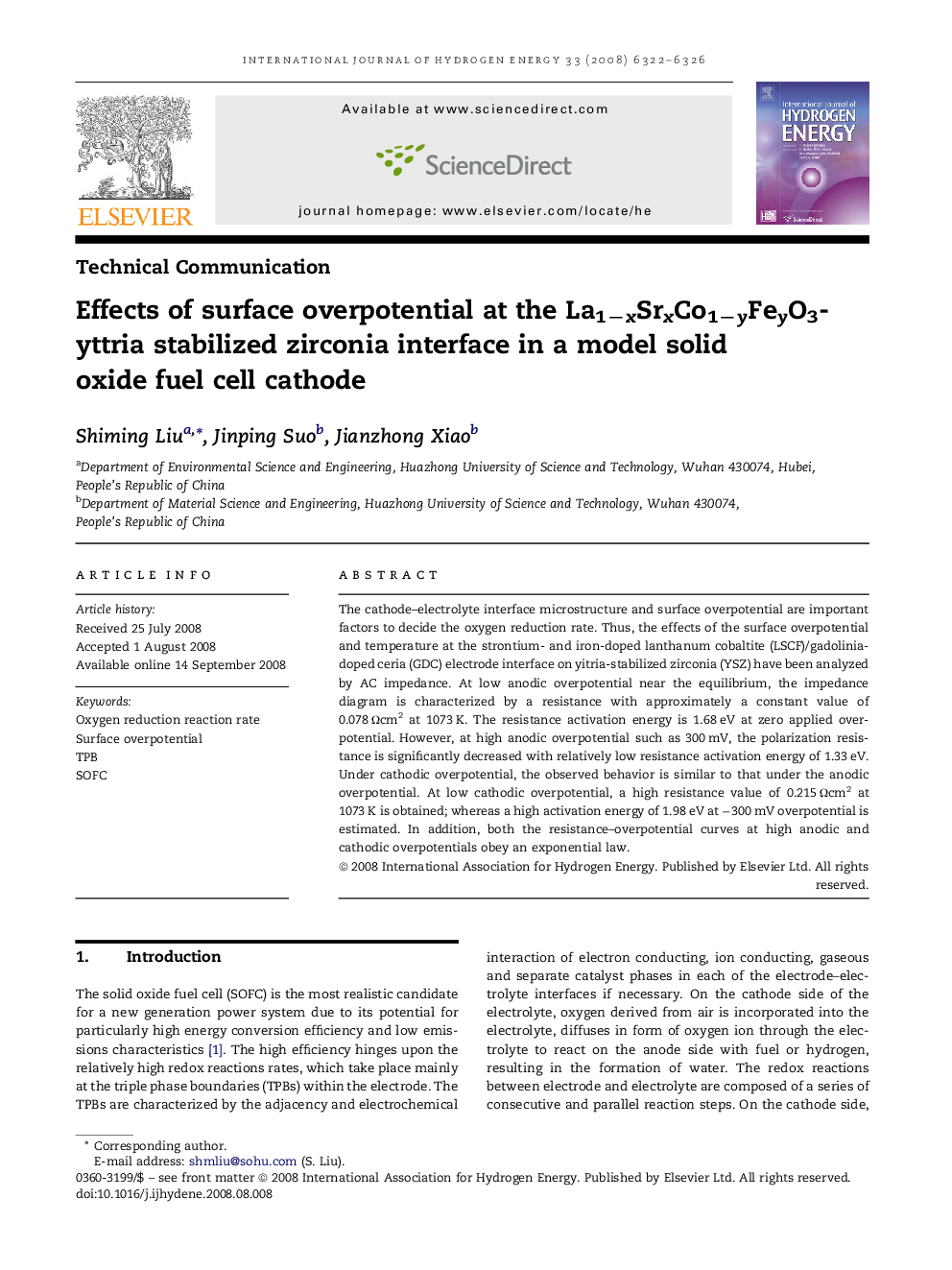| Article ID | Journal | Published Year | Pages | File Type |
|---|---|---|---|---|
| 1283635 | International Journal of Hydrogen Energy | 2008 | 5 Pages |
The cathode–electrolyte interface microstructure and surface overpotential are important factors to decide the oxygen reduction rate. Thus, the effects of the surface overpotential and temperature at the strontium- and iron-doped lanthanum cobaltite (LSCF)/gadolinia-doped ceria (GDC) electrode interface on yitria-stabilized zirconia (YSZ) have been analyzed by AC impedance. At low anodic overpotential near the equilibrium, the impedance diagram is characterized by a resistance with approximately a constant value of 0.078 Ωcm2 at 1073 K. The resistance activation energy is 1.68 eV at zero applied overpotential. However, at high anodic overpotential such as 300 mV, the polarization resistance is significantly decreased with relatively low resistance activation energy of 1.33 eV. Under cathodic overpotential, the observed behavior is similar to that under the anodic overpotential. At low cathodic overpotential, a high resistance value of 0.215 Ωcm2 at 1073 K is obtained; whereas a high activation energy of 1.98 eV at −300 mV overpotential is estimated. In addition, both the resistance–overpotential curves at high anodic and cathodic overpotentials obey an exponential law.
